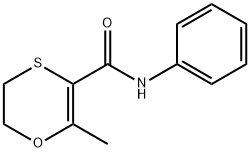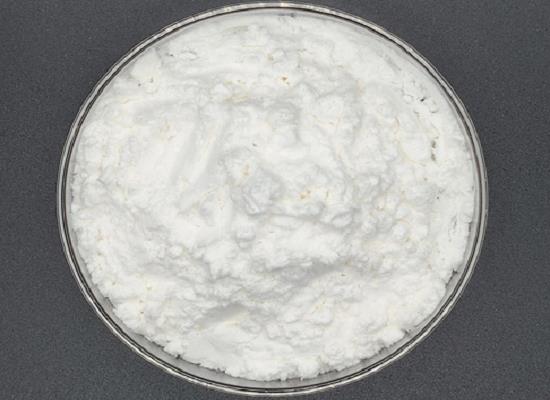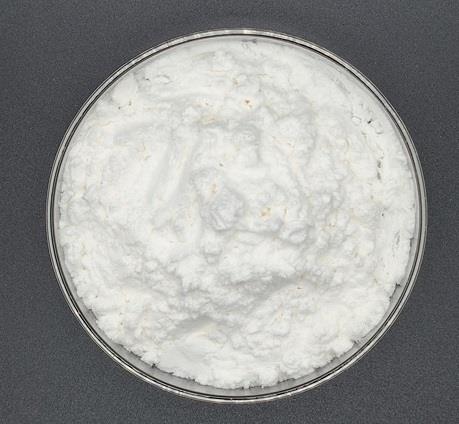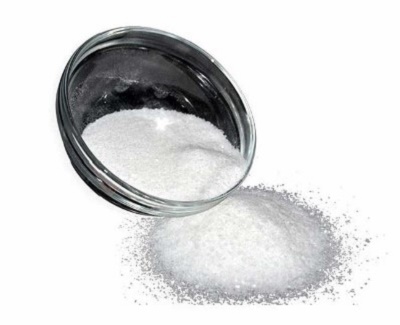Carboxin: mechanism of action, applications and cardiotoxicity
General Description
Carboxin, a systemic fungicide, exerts its antifungal effect by specifically targeting the respiratory chain of fungi. By inhibiting the mitochondrial complex III enzyme, it disrupts the electron transfer process, resulting in the suppression of ATP production and subsequent fungal cell death. This broad-spectrum fungicide finds extensive applications in agriculture, turf management, and wood preservation, effectively controlling various fungal diseases and promoting plant health. However, concerns arise regarding its cardiotoxicity in zebrafish embryos. Studies have shown that Carboxin exposure leads to structural changes in the hearts of zebrafish, accompanied by disrupted expression of heart developmental genes, oxidative stress, accumulation of reactive oxygen species, mitochondrial damage, reduced ATPase activities, and inhibited myocardial cell proliferation. These adverse effects ultimately result in heart failure and mortality. Given the potential risks, further research is necessary to comprehensively evaluate the impact and potential hazards of Carboxin on non-target organisms in aquatic ecosystems.
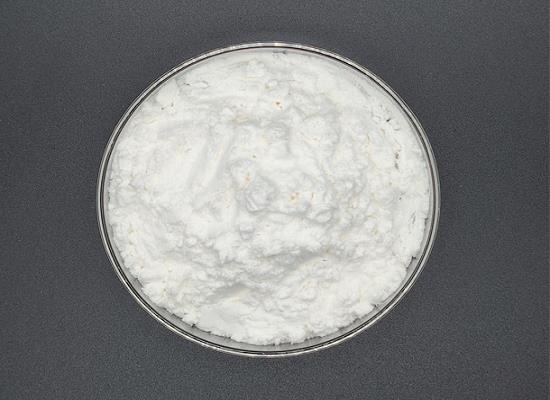
Figure 1. Carboxin
Mechanism of action
Carboxin is a broad-spectrum systemic fungicide that can effectively control various plant diseases caused by fungal pathogens. Its mechanism of action involves targeting the respiratory chain of fungi and disrupting their energy production. Specifically, carboxin inhibits the mitochondrial complex III enzyme, which is responsible for electron transfer during oxidative phosphorylation. By blocking this key enzyme, carboxin prevents fungi from generating ATP, thereby disrupting their vital cellular processes and ultimately leading to their death. Carboxin is effective against a wide range of fungal species, including those that have developed resistance to other fungicides. Its specificity towards fungi ensures that it does not cause harm to non-target organisms, making it an important tool in the management of plant diseases. 1
Applications
Carboxin is a widely used fungicide that has numerous applications in various industries. It is known for its effectiveness in controlling a range of fungal diseases, particularly those affecting crops. In agriculture, Carboxin is extensively utilized to protect crops from fungal infections. It is commonly employed in the cultivation of cereals, such as wheat, barley, and oats, as well as in the production of various vegetables, fruits, and ornamental plants. By treating seeds or soil with Carboxin, farmers can ensure healthier plant growth and higher crop yields. Furthermore, Carboxin finds applications in the turf industry, where it is used to combat fungal diseases that affect golf courses, sports fields, and landscapes. Its ability to control diseases like dollar spot and brown patch makes it a valuable tool in maintaining green and aesthetic turf surfaces. Apart from agriculture and turf management, Carboxin has proven effective in the preservation of wood and timber products. By treating wood with Carboxin-based products, manufacturers can prevent fungal decay and extend the lifespan of these materials. Overall, Carboxin's applications span across agriculture, turf management, and wood preservation, playing a crucial role in disease control and promoting the health and longevity of various plant species. 2
Cardiotoxicity
Carboxin is a heterocyclic systemic fungicide primarily used to prevent and control grain smut and wheat rust. While it has been reported to exhibit mammalian toxicity, its acute toxicity towards aquatic organisms is not well-known. A study utilizing zebrafish as a model organism demonstrated that Carboxin can induce developmental toxicity and cardiotoxicity in zebrafish embryos. Histopathological analysis of cardiac sections revealed structural changes in the hearts of zebrafish exposed to Carboxin, while fluorescence quantitative PCR results demonstrated significant disruptions in the expression levels of heart developmental genes. Moreover, Carboxin exposure led to oxidative stress and the accumulation of reactive oxygen species (ROS) in zebrafish embryos. This ROS accumulation resulted in mitochondrial damage, leading to decreased ATPase activities and gene expression levels. Confocal imaging indicated a significant reduction in the number of blood cells within the heart after Carboxin exposure. Additionally, Carboxin exposure inhibited myocardial cell proliferation. These observations collectively contribute to heart failure and ultimately lead to the death of the embryos. The cardiotoxic effects of Carboxin highlight the importance of understanding its impact on aquatic ecosystems and further assessing its potential risks to non-target organisms. 3
Reference
1. Tucker AN, Lillich TT. Effect of the systemic fungicide carboxin on electron transport function in membranes of Micrococcus denitrificans. Antimicrob Agents Chemother. 1974 Nov;6(5):572-578.
2. Honda Y, Matsuyama T, Irie T, Watanabe T, Kuwahara M. Carboxin resistance transformation of the homobasidiomycete fungus Pleurotus ostreatus. Curr Genet. 2000 Mar;37(3):209-212.
3. Huang Y, Wang Z, Peng Y, Xu R, Yan J, Xiong C, Ma J, Zhong K, Lu H. Carboxin can induce cardiotoxicity in zebrafish embryos. Ecotoxicol Environ Saf. 2022 Mar 15;233:113318.
);You may like
Related articles And Qustion
See also
Lastest Price from Carboxin manufacturers

US $185.00/KG2020-11-18
- CAS:
- 5234-68-4
- Min. Order:
- 1KG
- Purity:
- 99
- Supply Ability:
- 1000KG

US $0.00-0.00/Kg/Bag2020-03-24
- CAS:
- 5234-68-4
- Min. Order:
- 25KG
- Purity:
- 98%
- Supply Ability:
- 100tons
